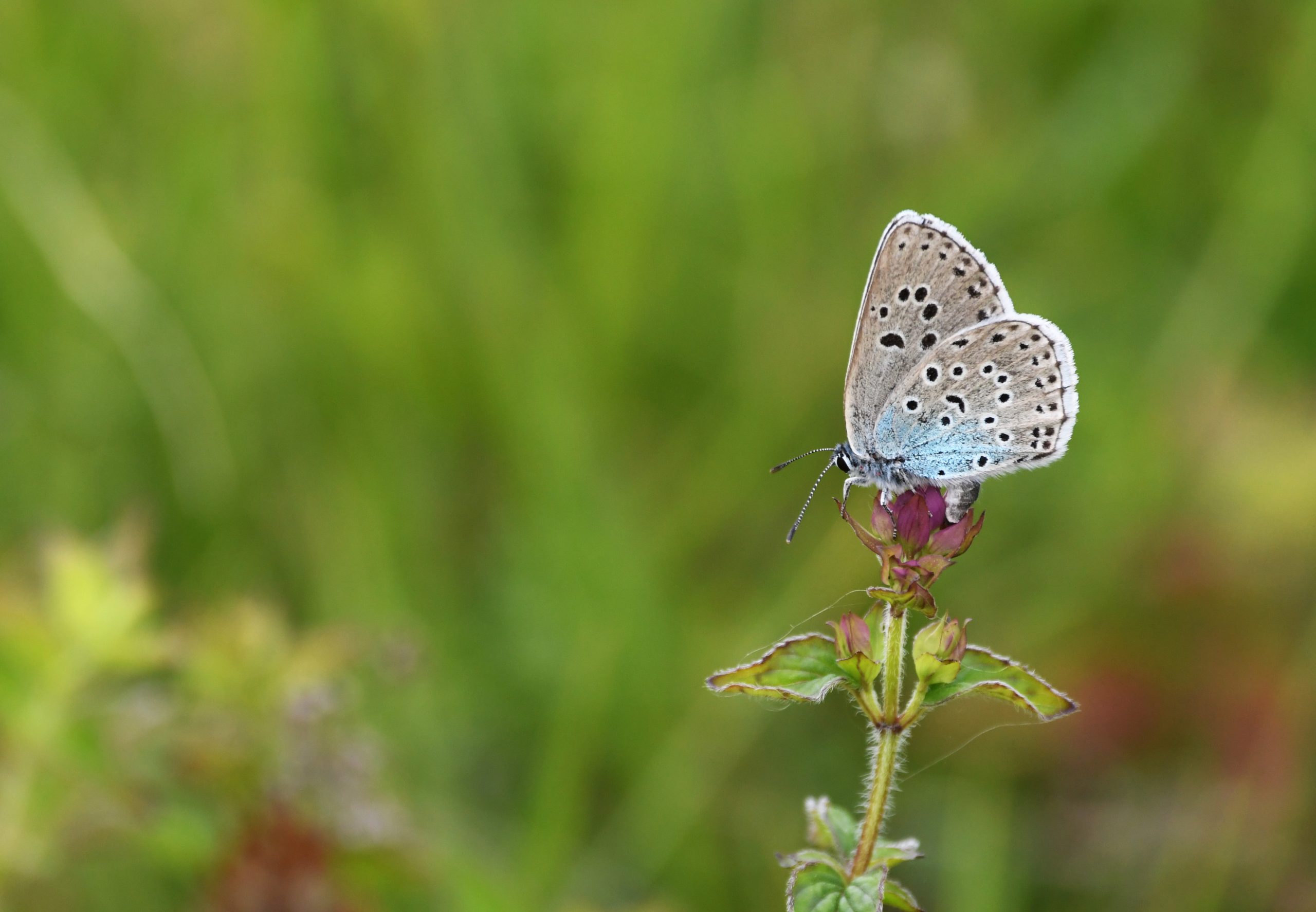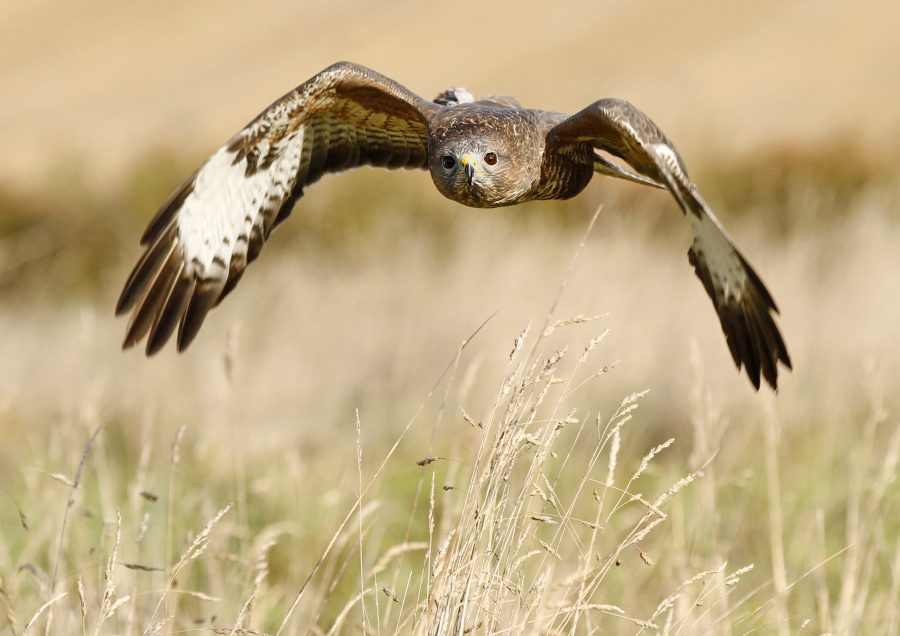The Wildlife Trusts are proud to support a new BBC nature series. Wild Isles, presented by Sir David Attenborough, started on Sunday, 12th March, on BBC One and iPlayer.
It is brilliantly co-produced by RSPB, WWF and the Open University, and it features several stunning locations cared for by The Wildlife Trusts. They include:
Skomer Island
Wild Isles viewers will be entranced by the puffins and Manx shearwaters that call this special Welsh island home. Skomer is less than a mile off the beautiful Pembrokeshire coast and is cared for by The Wildlife Trust of South and West Wales. It is well known for its puffins who arrive to breed between April and July. Manx shearwaters also breed in burrows on the island, returning here from the coast of South America in late February and March and staying until the end of October. They are known for their distinctive, haunting call as they fly onto the island at night to feed their young. Sir David was filmed on Skomer, entranced by the endeavour of these wonderful birds.
Lackford Lakes
With its beautiful watery vistas and huge array of wetland birds, Suffolk Wildlife Trust’s Lackford Lakes is a fabulous place to visit all year round. Listen to the sound of singing birds in spring with the arrival of nightingales and warblers from Africa – and later on, watch swallows and martins sweep over the water’s surface feeding on small flies. The Wild Isles team was drawn to this nature reserve by the buzzards that hunt rabbits in the species-rich grasslands that surround the lakes.
Daneway Banks
The limestone grassland at this precious hillside is one of Gloucestershire Wildlife Trust’s most treasured habitats. A Site of Special Scientific Interest, Daneway Banks is covered in large ant hills on which wild thyme grows – these provide the perfect place for its star inhabitant, the large blue butterfly. Wild Isles filmed the extraordinary life cycle of this butterfly that shows how this once extinct butterfly depends on ants, wild thyme and wild marjoram. Please keep to paths if you visit, to protect these rare insects.
Clattinger Meadows
Wiltshire Wildlife Trust is proud to care for this amazing place which is the UK’s finest remaining example of enclosed lowland grassland. It is a Site of Special Scientific Interest for its fabulous wildflowers and is so rich in wildlife because the land has been farmed traditionally without the use of artificial fertilisers. Visit in late April to see thousands of delicately patterned snakeshead fritillaries and walk through the meadows in June to see wildflowers such as meadow saffron, tubular water-dropwort, orchids and the extremely rare downy-fruited sedge. In winter wading birds such as teal, lapwing and snipe forage on the wet meadows.
Langford Lakes
This is a fabulous place to see birds! In spring watch for great-crested grebes famous courtship ritual as they dance and shake their heads at each other. Reed warbler, waders and terns drop in on their summer migration. As winter advances shoveler and wigeon join the other ducks present all year round and occasionally the endangered and secretive bittern pays a visit to this Wiltshire Wildlife Trust haven. Watch out for the sight that drew Wild Isles to visit – the hobbies hunting dragonflies over the water. White-tailed eagles can sometimes also be seen here, attracted by the fish in the lakes.

(Copyright) Billy Heaney
Prior’s Wood, Hutton Woods and Lower Woods
Avon Wildlife Trust’s Prior’s Wood is renowned for its bluebells that thrive in the ancient woodland from late April. Bluebells were voted the nation’s favourite flower and are a protected species – they are under threat in some places from habitat destruction and cross breeding with the Spanish bluebell that escaped from gardens. The Wild Isles team filmed the arum, also known as Lords and Ladies or Cuckoo-pint, that grows in Hutton Woods and Gloucestershire Wildlife Trust’s Lower Woods – it attracts flies with its unusual scent.
Craig Bennett, chief executive of The Wildlife Trusts, says: “The BBC’s Wild Isles series will leave viewers astounded by the drama and beauty of the natural world that surrounds us here in the British Isles. The Wildlife Trusts have been proud to support the co-producers – our fellow nature charities RSPB and WWF – by providing some of our spectacular locations. It’s given us a golden opportunity to shine a spotlight on the remarkable wildlife that calls these special places home.
“The British Isles are very precious and are inhabited by astonishing wildlife and magical landscapes that capture the imagination. From puffins making their homes on Skomer to fragments of ancient rainforests in Dartmoor, we are so lucky to have such a range of incredible natural wonders right on our doorstep. It is wonderful that Sir David is bringing these treasures to the world.
“But the series also comes at a time when nature is under immense pressure. Wildlife has suffered catastrophic declines in recent decades and, without monumental effort to create a wilder future, some of our most cherished species will go extinct. We hope this series will inspire people to take a stand for our wildlife and help put out natural world into recovery. Our future depends on it.”
For more information about where to see wildlife with The Wildlife Trusts, visit www.wildlifetrusts.org/visit/where-see-wildlife
Buzzard image credit: Jon Hawkins_Surrey Hills Photography
More news like this can be found in The Country Smallholder magazine. Subscribe here.
For FREE updates from the world of smallholding, sign up for The Country Smallholder newsletter here.








